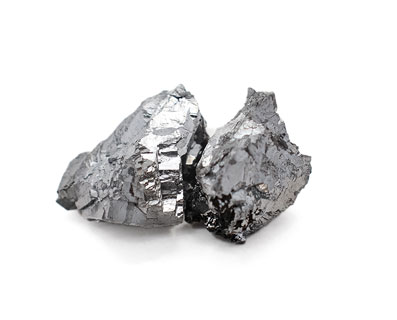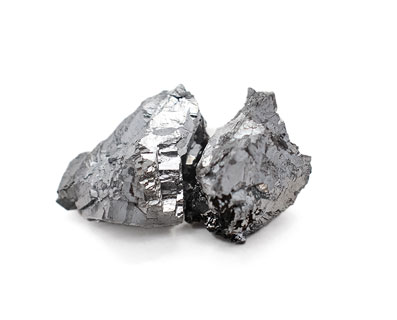English

What are you looking for?
Brand | Chemical Compositions (%) | ||||||
V | C | Si | P | S | Al | Mn | |
≤ | |||||||
FeV40-A | 38.0~45.0 | 0.60 | 2.0 | 0.08 | 0.06 | 1.5 | --- |
FeV40-B | 38.0~45.0 | 0.80 | 3.0 | 0.15 | 0.10 | 2.0 | --- |
FeV50-A | 48.0~55.0 | 0.40 | 2.0 | 0.06 | 0.04 | 1.5 | --- |
FeV50-B | 48.0~55.0 | 0.60 | 2.5 | 0.10 | 0.05 | 2.0 | --- |
FeV60-A | 58.0~65.0 | 0.40 | 2.0 | 0.06 | 0.04 | 1.5 | --- |
FeV60-B | 58.0~65.0 | 0.60 | 2.5 | 0.10 | 0.05 | 2.0 | --- |
FeV80-A | 78.0~82.0 | 0.15 | 1.5 | 0.05 | 0.04 | 1.5 | 0.50 |
FeV80-B | 78.0~82.0 | 0.20 | 1.5 | 0.06 | 0.05 | 2.0 | 0.50 |
Size | 10-50mm 60-325mesh 80-270mesh & custom size | ||||||
Ferro vanadium is an iron alloy consisting of vanadium and iron, mainly used as an alloy additive in steelmaking. The main raw material of ferro vanadium production that ferro vanadium producers use in China is vanadium titanomagnetite. According to ferro vanadium chemical composition, after beneficiation and enrichment, vanadium-bearing pig iron is purified by a blast furnace, and vanadium slag is extracted in an atomizing furnace or converter blowing process. Vanadium slag is pulverized and sodium salt (soda ash, salt, or anhydrous mirthenite) is added for roasting by sodium oxide to make vanadium into soluble sodium metavanadate (NaVO3). After leaching and purification, ammonium sulfate is added to precipitate ammonium polyvanadate [(NH4)2V6O16], which is then deaminated and melted to cast into sheet vanadium pentoxide.
Ferrovanadium is an important alloy additive in iron and steel industry. Vanadium improves the strength, toughness, ductility and heat resistance of steel. High-strength low alloy steel (HSLA) containing vanadium is widely used in the production and construction of oil/gas pipelines, buildings, Bridges, rails, pressure vessels, carriage frames and so on because of its high strength. The application range of various vanadium steel is more and more wide, and the related talents are more and more important.
* As a professional ferro vanadium supplier, HSG Metal also provides other ferroalloy products, including ferro tungsten, ferro molybdenum, and ferro niobium. If you are interested in our ferroalloy products, click and check out more details. Or you can contact us directly.

Increases Hardenability:
By facilitating a more uniform hardening process during heat treatment, ferro vanadium enhances the ability of steel alloys to achieve desired hardness levels.
Promotes Fine Grain Size:
Incorporating ferro vanadium aids in refining the grain structure of metals, leading to a finer microstructure. This refinement can improve mechanical properties such as toughness and fatigue resistance.
Improves Wear Resistance:
Ferro vanadium enhances the material's ability to withstand abrasion and wear, making it suitable for applications where durability is critical.
Greatly Raises Strength and Hardness:
The addition of ferro vanadium significantly increases the strength and hardness of alloys, providing superior mechanical performance in demanding environments.
Ferrovanadium is mainly used as an alloy additive in steelmaking. After adding iron vanadium to steel, the hardness, strength, wear resistance and ductility of steel can be significantly improved, and the cutting performance of steel can be improved. Iron vanadium is commonly used in carbon steel, low alloy steel strength steel, high alloy steel, tool steel and cast iron production.
Vanadium ferro alloys types are suitable for alloy steel smelting, alloying element additive and stainless steel electrode coating.
HSG Metal, as one of the most professional ferro vanadium producers in China, have been providing high-quality products for many customers and different ferro vanadium uses. If you are looking for a reliable refractory metal company, please reach to us for ferro vanadium price today!


Electro-silicothermic process
With 75% ferrosilicon and a small amount of aluminum as reducing agent, the flake vanadium pentoxide was purified in alkaline electric arc furnace through two stages of reduction and refining. During the reduction period, all the reducing agent of the first furnace and the sheet vanadium pentaoxide accounting for 60 ~ 70% of the total amount were loaded into the electric furnace, and silicon thermal reduction was carried out under the high calcium oxide slag. When the V2O5 in the slag is less than 0.35%, the slag is released (called poor slag, can be discarded or used as building materials), into the refining period. At this time, flake vanadium pentaoxide and lime are added to remove the excess silicon and aluminum in the alloy liquid. When the alloy composition meets the requirements, the iron alloy can be slag out. The slag released in the later stage of refining is called rich slag (containing V2O5 up to 8 ~ 12%), which is returned to use when the next furnace begins to feed. The alloy liquid is generally cast into cylindrical ingot, which is finished after cooling, demolding, crushing and slag removal. This method is generally used for smelting iron vanadium containing 40 ~ 60% vanadium. The recovery rate of vanadium is up to 98%. Refining consumes about 1600 kilowatt-hours per ton of iron vanadium refractory metal products.
Thermite process
Smelting with aluminum as reducing agent is carried out by lower ignition in a barrel lined with alkaline furnace. First, a small part of the mixed charge is loaded into the reactor, that is, ignition. After the beginning of the reaction and then add the rest of the charge. Is typically used for smelting Gao Fantie (containing vanadium 60 ~ 80%), the recovery rate was slightly lower than electrical silicon thermal method, about 90-95%.
Ferrovanadium is a versatile additive essential for enhancing ferrous alloys across various industries. It plays a critical role in improving corrosion resistance against alkaline reagents, sulfuric acid, and hydrochloric acid, while also boosting the material's tensile strength-to-weight ratio. This makes it indispensable in the production of high-performance steels used in automotive, aerospace, and structural applications. Additionally, ferrovanadium's application extends to improving the durability and wear resistance of tools and mechanical components. Its versatility further includes catalytic roles in chemical processes and exploration for potential advancements in energy storage technologies like vanadium redox flow batteries, highlighting its pivotal role in modern metallurgy and beyond.
Ferro vanadium, a crucial alloying agent in steel production and other applications, is primarily manufactured through several key methods that cater to varying purity and specific alloy requirements:
Aluminothermic Reduction: This method involves mixing vanadium oxides, typically V2O5, with aluminum powder. Upon ignition, an exothermic reaction occurs where aluminum acts as a reducing agent. The resulting molten ferro vanadium is separated from aluminum oxide slag. Aluminothermic reduction is favored for producing higher purity grades of ferro vanadium, such as 60% and 80% vanadium content.
Direct Reduction in Electric Furnace: Vanadium oxides are combined with a carbonaceous material, like coke or coal, in an electric arc or submerged arc furnace. The mixture is heated to extreme temperatures, around 1600-2000°C, where carbon reduces vanadium oxides to metallic vanadium and iron oxides to iron. Fluxes are used to facilitate slag formation and remove impurities. This method is versatile, producing a range of ferro vanadium grades suitable for different industrial applications.
Thermite Reaction: In this exothermic process, vanadium and iron oxides are co-reduced by aluminum granules. This reaction occurs in specialized vessels such as magnesite-lined steel vessels or water-cooled copper crucibles. The thermite process is utilized not only for ferro vanadium but also for manufacturing vanadium master alloys, offering flexibility in alloy composition and application-specific requirements.
Each production method ensures ferro vanadium meets stringent quality standards, enhancing the mechanical properties of alloys used in industries such as automotive, aerospace, and tool manufacturing. These methods highlight the versatility and essential role of ferro vanadium in modern metallurgy and industrial applications.